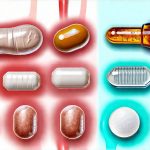Bladder burning, often described as a stinging or painful sensation while urinating (dysuria), can be incredibly disruptive and uncomfortable. It’s rarely a condition in itself but rather a symptom pointing to an underlying issue – most commonly a urinary tract infection (UTI). However, identifying the root cause isn’t always straightforward. While bacterial infections are frequent culprits, many individuals experience bladder irritation triggered by dietary choices. This article explores foods and beverages that may contribute to bladder burning sensations, offering insight into potential triggers and ways to manage symptoms through mindful eating. It’s crucial to remember that individual sensitivities vary greatly; what bothers one person might not affect another.
Understanding the connection between food and bladder health is about recognizing how certain compounds interact with the urinary system. The bladder lining is delicate, and some substances can cause irritation or inflammation, leading to those unpleasant burning sensations. Factors beyond diet also play a significant role – hydration levels, overall health, and existing conditions all contribute. This exploration aims to empower you with knowledge so you can better understand your body’s reactions and potentially identify dietary adjustments that might alleviate discomfort. It’s essential to consult a healthcare professional for proper diagnosis and treatment if you are experiencing persistent or severe bladder burning.
Dietary Culprits: Common Food Triggers
Certain foods and beverages are notorious for potentially irritating the bladder, primarily due to their acidity, spice levels, or specific chemical compounds. Citrus fruits—oranges, grapefruits, lemons, and limes—are frequently cited as triggers. While incredibly healthy in many ways, their high citric acid content can be harsh on a sensitive bladder lining. Similarly, tomatoes and tomato-based products (sauces, juices, ketchup) contain significant acidity that may cause irritation for some individuals. Coffee, tea, and carbonated beverages also fall into this category; caffeine acts as a diuretic, increasing urine production which can exacerbate inflammation, while the bubbles in carbonated drinks add to bladder pressure. Alcohol, particularly beer and wine, can have similar effects. It’s not about eliminating these foods entirely for everyone, but rather paying attention to how your body responds after consuming them.
The impact isn’t always immediate. Often, a pattern emerges – consistently experiencing burning sensations following consumption of specific foods. This makes identifying triggers a bit like detective work. Keeping a food diary can be immensely helpful in tracking what you eat and drink alongside any associated symptoms. Be detailed! Note not just the food itself but also portion sizes and how you feel afterward (even if it’s hours later). Consider a process of elimination – temporarily removing suspected foods from your diet to see if symptoms improve, then slowly reintroducing them one at a time. This can help pinpoint specific sensitivities. Remember that even seemingly innocuous foods like chocolate or artificial sweeteners have been reported to trigger bladder issues in some individuals.
Finally, spicy foods are another frequent offender. Capsaicin, the compound responsible for the heat in peppers and other spices, can irritate the bladder lining and cause discomfort during urination. This isn’t necessarily a universal experience; people vary widely in their tolerance levels. However, if you notice increased burning sensations after consuming spicy meals, it’s worth considering reducing your intake or avoiding them altogether. The key takeaway is that identifying dietary triggers is highly personalized—what bothers one person may not bother another, and careful observation is crucial.
Identifying Your Personal Triggers
The first step in managing bladder burning related to food isn’t necessarily eliminating everything suspected; it’s about becoming a mindful observer of your body. Start by keeping a detailed food diary for at least a week, ideally two. Include: – What you eat and drink (be specific—brand names matter) – Portion sizes – Time of consumption – Any symptoms experienced, including the timing and severity of bladder burning or discomfort.
After a week or two, analyze your diary for patterns. Are there any foods consistently associated with increased symptoms? If so, consider an elimination diet. This involves removing the suspected trigger food from your diet for 2-4 weeks and monitoring if symptoms improve. Then, slowly reintroduce it in small amounts to see if the burning returns. It’s vital to only eliminate one or two foods at a time; otherwise, it becomes difficult to determine which is causing the issue.
Don’t underestimate the power of hydration. Dehydration concentrates urine, making it more irritating to the bladder. Aim for 6-8 glasses of water per day unless your doctor advises otherwise. Understanding how to maintain proper hydration can also involve looking at foods that hydrate without triggering bladder urgency.
The Role of Artificial Sweeteners and Additives
Artificial sweeteners – aspartame, saccharin, sucralose – are often touted as healthier alternatives to sugar, but they can sometimes contribute to bladder irritation. Some individuals report increased burning sensations after consuming products containing these sweeteners. This is likely due to their chemical composition and how the body processes them. It’s not a widespread issue, but if you regularly consume diet sodas, sugar-free candies, or other artificially sweetened products and experience bladder discomfort, it’s worth exploring whether they are contributing factors.
Food additives, preservatives, and dyes can also play a role in some cases. Certain colorings (like tartrazine) and preservatives (like benzoates) have been linked to allergic reactions and sensitivities that may manifest as bladder irritation. Again, this is not universal—many people tolerate these substances without issue—but if you’re sensitive or prone to allergies, it’s something to consider. Reading food labels carefully and choosing whole, unprocessed foods whenever possible can minimize exposure to potential irritants.
Ultimately, the connection between artificial sweeteners, additives, and bladder burning isn’t fully understood and requires more research. However, for those experiencing unexplained symptoms, exploring these possibilities through dietary adjustments can be a valuable step in identifying triggers.
Hydration and Bladder Health: A Vital Connection
Proper hydration is arguably one of the most important aspects of maintaining healthy bladder function – and avoiding burning sensations. When you’re dehydrated, urine becomes concentrated with waste products, making it more irritating to the bladder lining. This can lead to increased frequency, urgency, and discomfort during urination. Aiming for 6-8 glasses of water daily is a good starting point, but individual needs vary based on activity level, climate, and overall health.
The type of fluids you consume also matters. While water should be the primary choice, herbal teas (non-caffeinated) can also contribute to hydration. Avoid excessive amounts of caffeinated beverages, alcohol, and sugary drinks, as these can all exacerbate bladder irritation. Consider spreading your fluid intake throughout the day rather than drinking large volumes at once. This helps maintain a consistent level of hydration without overworking the bladder.
Finally, listen to your body’s signals. If you’re thirsty, drink! Don’t wait until you feel parched. Paying attention to these cues and prioritizing adequate hydration is a simple yet powerful step towards managing bladder health and potentially reducing those uncomfortable burning sensations. For additional support, consider exploring alkaline foods that may reduce urinary tract acidity.
Disclaimer: This article provides general information about foods that may trigger bladder burning. It is not intended as medical advice, and you should always consult with a qualified healthcare professional for diagnosis and treatment of any medical condition. Individual sensitivities vary greatly, and what affects one person may not affect another.





















